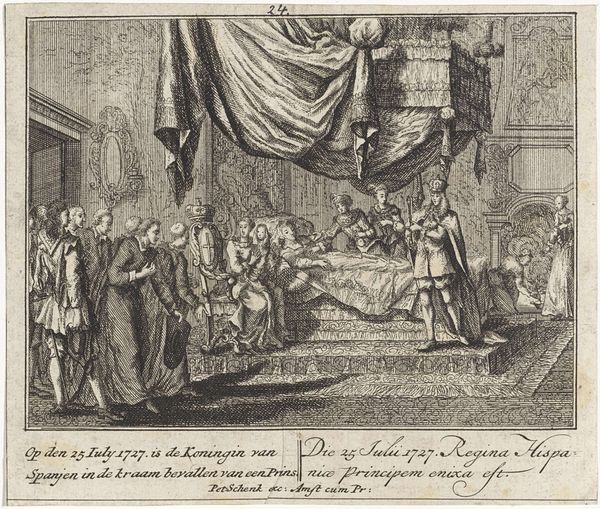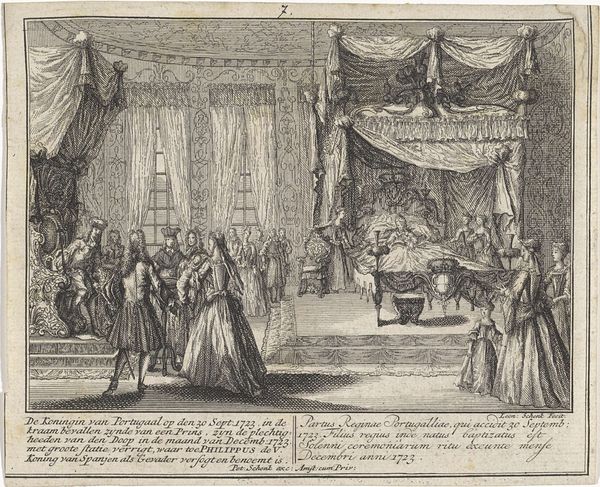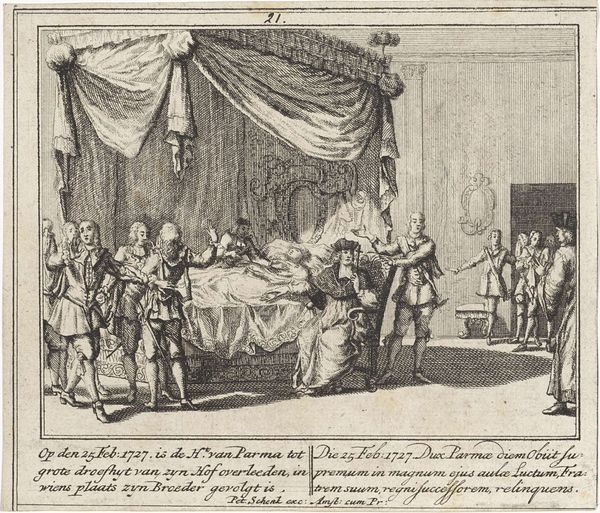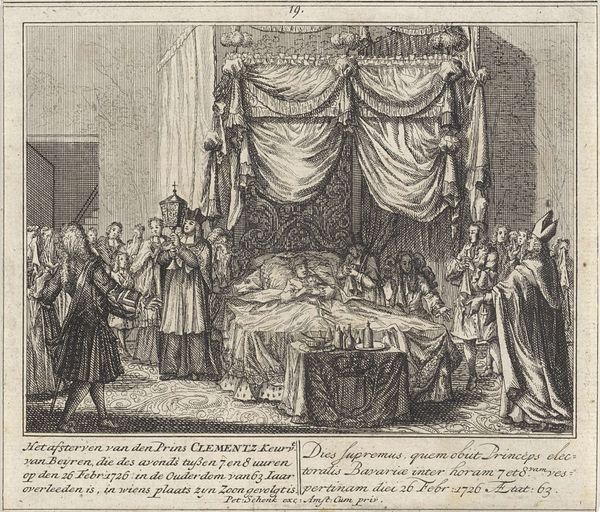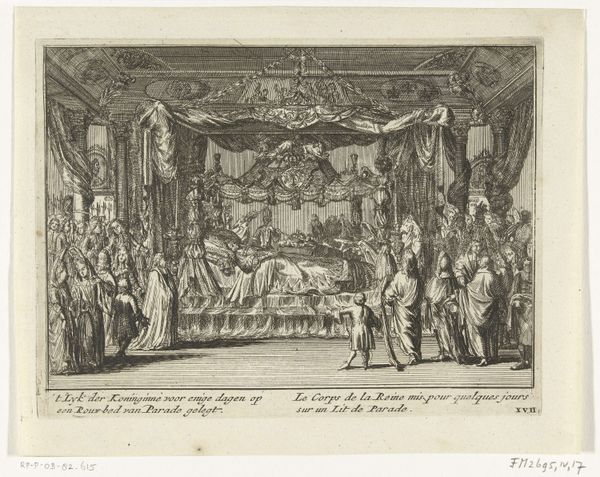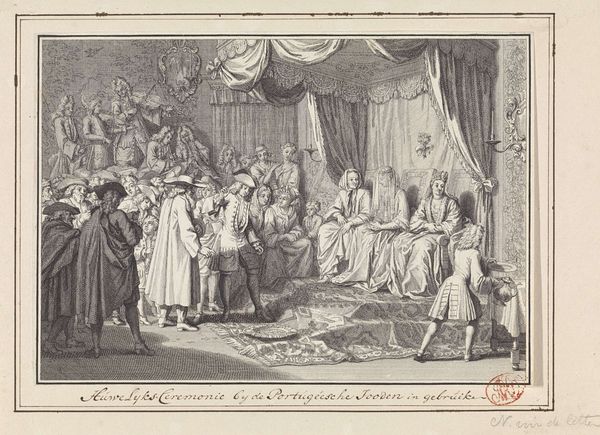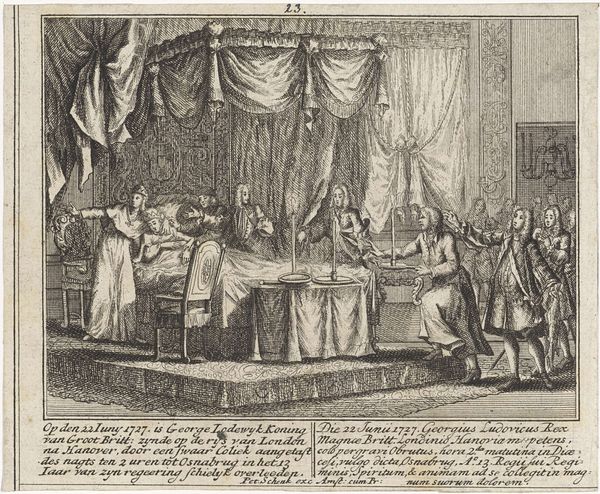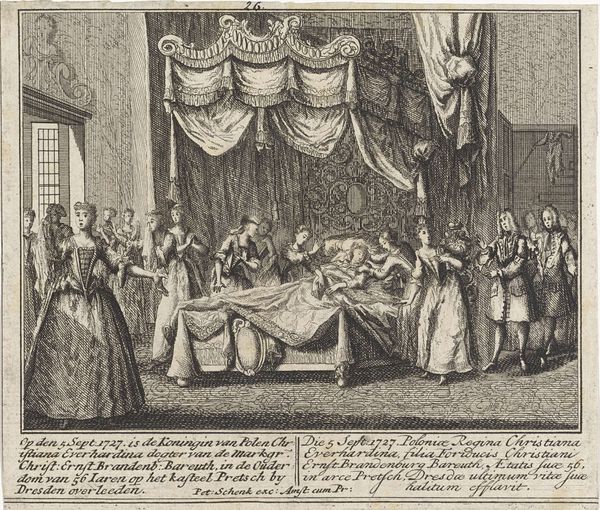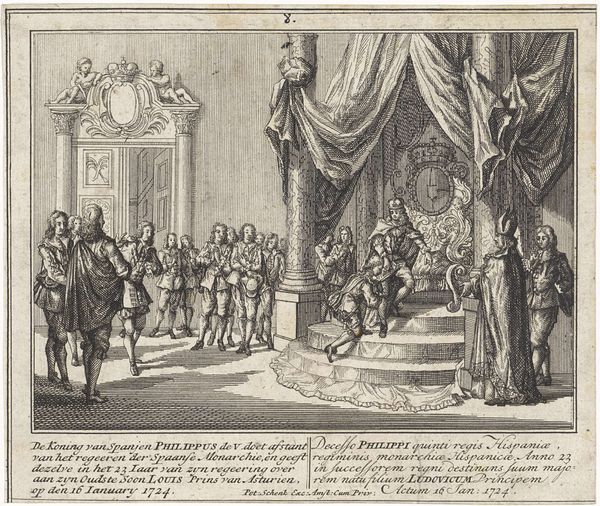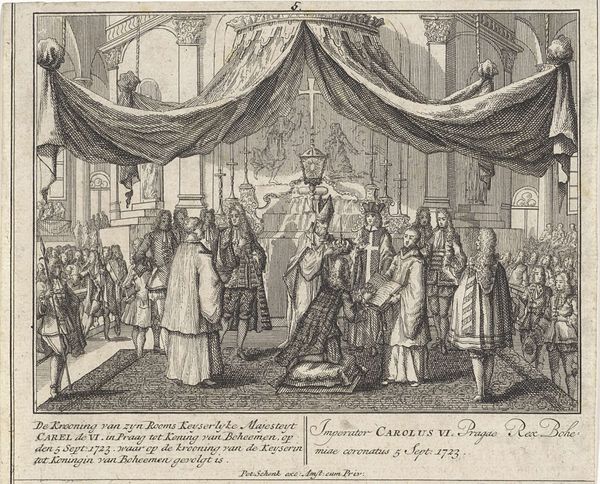
print, engraving
#
narrative-art
#
baroque
#
mechanical pen drawing
# print
#
pen sketch
#
sketch book
#
figuration
#
personal sketchbook
#
sketchwork
#
pen-ink sketch
#
line
#
pen work
#
sketchbook drawing
#
genre-painting
#
history-painting
#
storyboard and sketchbook work
#
sketchbook art
#
engraving
Dimensions: height 157 mm, width 192 mm
Copyright: Rijks Museum: Open Domain
Curator: Look at this delicate engraving by Leonard Schenk, titled "Bezoek aan het kraambed van Sophia Dorothea van Hannover," made in 1727. Editor: It has an airy, dreamlike quality, even though the scene itself must have been quite hectic. The light is so evenly distributed; it gives everything this gossamer, almost ethereal feel. Curator: Yes, Schenk masterfully captured the moment with these fine lines, emphasizing the formal, ritualized nature of a royal birth. What symbols do you recognize in the scene? Editor: Well, immediately the ornate bed is striking—almost a stage in itself. Consider who’s present: women are at the forefront, both tending to the queen and acting as witnesses. It seems like they hold both the physical and symbolic power in this intimate yet very public setting. Curator: Exactly, the women attending represent lineage, legacy and the continuation of the dynasty through this birth. They mirror historical artistic depictions of similar visits, which traditionally had deep socio-cultural symbolism, and represent an official, royal acknowledgement of birth. Editor: Absolutely. There's also this palpable sense of expectation. The queen is centered but passive, an object of attention rather than an active participant, hinting at the societal burdens placed on royal women solely for their reproductive capabilities. Curator: That is a key intersectional interpretation. Indeed, if we consider it more closely, we realize how the depiction adheres to established paradigms to transmit an idealized idea of royal birth, where lineage, order, and stability are elevated. Editor: Right, and knowing this was during the Baroque period, this kind of artwork really underscores how art was deployed as political currency— a carefully constructed image meant to convey power. Curator: It makes you wonder what really was behind the closed door, unseen in Schenk's work. It highlights the interesting interplay of historical truth and carefully curated visual narrative. Editor: It makes me want to know more about Sophia Dorothea von Hannover and what power she had behind the gilded scene. Thank you for pointing out its social and political context.
Comments
No comments
Be the first to comment and join the conversation on the ultimate creative platform.
